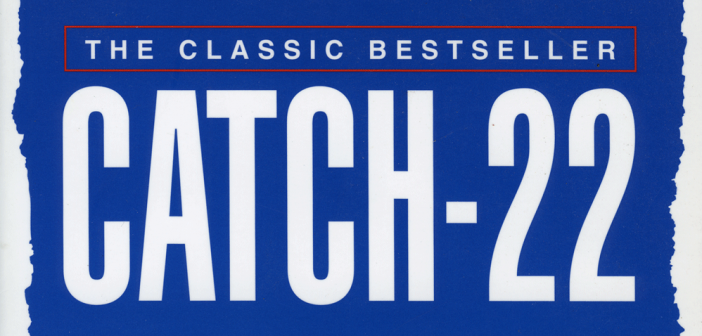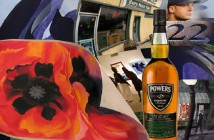I used to hang out some in Guaymas, Mexico during the early 1970s. There was a bar there called the Barracuda, locally known as the Cuda. The popular drink there was called the Barracuda, a highball mixture of rum, vodka and triple sec.
The Cuda was a popular watering hole for various and sundry expatriates at the time. Viet vets. Hippies. Actors. Europeans who liked to chase their tequila sunrises with marijuana and peyote. It’s where the Sonoran Desert drops to sea level and meets the Gulf of California. And that means hot and dry and beer.
Orson Welles in fact closed down the Cuda many a night since Guaymas is the town where Hollywood made a film out of Joseph Heller’s best seller book Catch-22. Orson Wells was one of the stars.
Location scouts chose the Mexican fishing port as the place that most resembled Heller’s fictive island Pianosa in the Mediterranean. Hollywood bet $18 million that Mike Nichols, Alan Arkin, Tony Perkins, Orson Welles and Art Garfunkel, in his acting debut, could turn out a big box office movie. But they were wrong.
Instead, Paramount banked just $3 million on a movie called MASH that same year and it became one of the biggest earners of the 1970s. People wanted the situational comedy of a medical unit saving lives in Korea, not the black humor of a bomber squadron avoiding the grim reaper.
The post-World War 2 era launched a wave of novels and novelists that reminded Americans why General William Tecumseh Sherman said “War is hell.” You can run the gauntlet from James Jones’ From Here To Eternity to Norman Mailer’s The Naked and the Dead and Irwin Shaw’s The Young Lions. But no book conveys the insanity of the war machine itself better than Joseph Heller’s Catch-22.
Heller did such a good job that his book has sold over 10 million copies to date. Although it is considered a World War 2 novel by many, he was still working on it when Elvis was wooing the frauleins while driving trucks for the U.S. Army in Cold War West Germany.
Voted the 7th greatest novel of the 20th century by the review panel of the Modern Library, Catch-22 was not published until 1961. Like many works of fiction through the 1960s, Catch-22 was overanalyzed and over criticized due to its unconventional structure and grammar, not on the characters and themes that made it a runaway best seller. One could say there was a groundswell effect, trumping the lukewarm reviews that heralded its publication.
The groundswell developed because Heller was the first American novelist to take on the emerging monolith President Eisenhower called The Industrial-Military Complex in his Farewell Address To The Nation on January 17, 1961, a speech given just a few months before Simon and Schuster released Catch-22.
Ironically, The United States Air Force Academy in Colorado Springs, Colorado has been using Catch-22 in its officer training curriculum for decades to point out the pitfalls of the military bureaucracy. Wonder why Robert McNamara, the Ford executive who green-lighted the Edsel, was picked as the Defense Secretary to green-light the Vietnam War? Read Catch-22.
The plotline of this black humor saga unfolds not in the Pacific jungles like The Naked and the Dead, but at an American airbase on the fictive island of Pianosa in the Mediterranean near Italy. And, unlike Harvard macho boy Mailer, who was drafted and served as a cook with an Army unit and performed non-combat duties, Heller came right of high school in Brooklyn and volunteered for duty in the United States Army Air Corps. He was trained as a bombardier using the famous top secret Norden bombsight, and, between April and October 1944, flew 60 combat missions in a twin engine B-25 “Mitchell” medium bomber.
Although he claims never to have never criticized his superior officers, saying in open source interviews that they were “all good men,” the characters in Catch-22 offer a rogue’s gallery of self-aggrandizing military men who put their careers before the lives of their men, and it recalls a certain military event known as Bush’s “Mission Accomplished” speech announcing the end of the Iraq War that was produced by propaganda-meister Karl Rove. It was a Catch-22 in and of itself.
Heller’s beef with the system was Mission Accomplished Redux. Already part of a shell-shocked bomber crew in real life, Catch-22 was a moniker conjured up by an Army Air Corps flight surgeon to reduce training costs toward the end of the war by extending the number of combat missions required for the crews to be rotated home. In the Hollywood movie, Memphis Belle, a vehicle for New Orleans crooner Harry Connick, Jr., it only took 25 missions to get a ride home.
After the war, Heller headed west and attended the University of Southern California on the G.I. Bill. He kept his powder dry and became an authentic new voice. With war novels running out of gas and the likes of Philip Roth, Ken Kesey and Bruce Jay Friedman yet to be blue penciled by Esquire fiction editor Gordon Lish (aka “Captain Fiction”), Heller’s message shined through.
He appealed to the changing values of readers who were roiled by the unpleasantness of the McCarthy era, the mutually-assured destruction of the Pentagon’s arms race, and the Cold War. He also gained a large following from the 1960s generation of baby boomers and the “Ban the Bomb” movement in England who were disillusioned by nuclear politics and the Vietnam War.
While meaning different things to different people, the term “Catch-22” has worked its way into the dictionaries of the English language, meaning some sort of inescapable, Kafkaesque conundrum.
For those who prefer to get their Catch-22 experience on the Silver Screen, the book was made into a film in 1970, directed by the venerable Mike Nichols with Buck Henry handling the screenwriting chores. The production featured Alan Arkin as protagonist John Yossarian, Orson Welles as the cantankerous General Dreedle and Jon Voight as sociopathic black market genius Milo Minderbinder.
The movie is entertaining and full of laughs. But it got overshadowed by Francis Ford Coppola’s patriotic opusPatton, released that same year. While a lot of bombers crashed and burned in Catch-22, Eisenhower’s friend Patton got run off the road in real life near Heidelberg by other resourceful demons that still haunt America’s military soul. In an increasingly Tweetstream world where 140 characters are worth a novel, maybe it’s time for script doctor Aaron Sorkin to be a mensch and do a Catch-22 remake.
What Is a “Catch-22”? According to the Merriam-Webster online dictionary, a Catch-22 is a problematic situation for which the only solution is denied by a circumstance inherent in the problem or by a rule; also, the circumstance or rule that denies a solution.
The second tier definition unfolds as follows: a measure or policy whose effect is the opposite of what was intended. A situation presenting two equally undesirable alternatives. A hidden difficulty, or hidden agenda that serves as a means of entrapment. If you are interested, here you can read a Catch-22 “logic map“.




